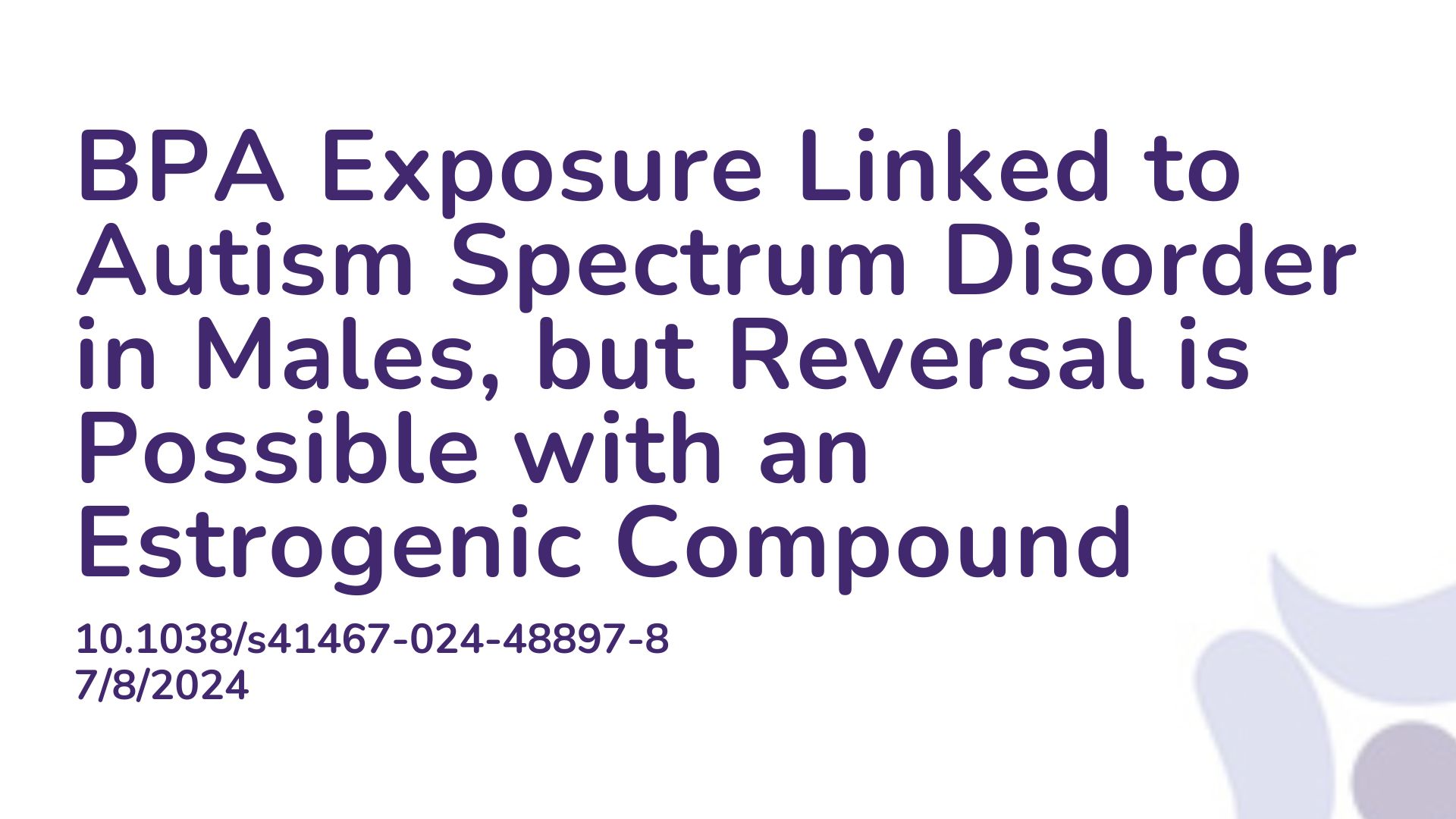Summary:
Autism spectrum disorder (ASD) is a neurodevelopmental condition affecting 1–2% of people in Western countries. ASD prevalence is rising due to increased awareness and genetic and environmental factors. Notably, 80% of those diagnosed are male. Research indicates that brain aromatase, an enzyme converting androgens to estrogens, may play a role in ASD. It also suggests that reduced aromatase activity in males with ASD, along with disruption by endocrine-disrupting chemicals like bisphenols (BPAs) found in plastics, is linked to a higher risk of ASD, particularly in males. This study investigated whether increased prenatal BPA exposure elevates the risk of ASD in males, focusing on aromatase as a key factor. It also explored the potential of 10-hydroxy-2-decenoic acid (10 HDA), an estrogenic compound in royal jelly, to alleviate ASD-like symptoms in mice exposed to BPA. The results showed that male mice exposed to BPA exhibited ASD-like behaviors along with structural and functional brain changes. 10HDA alleviated these behaviors and reversed harmful neurodevelopmental gene expression. This study therefore demonstrated that prenatal BPA exposure can impair brain function, leading to ASD-related behaviors and brain abnormalities in males, which may be reversible through postnatal intervention with 10 HDA.
Abstract:
Male sex, early life chemical exposure and the brain aromatase enzyme have been implicated in autism spectrum disorder (ASD). In the Barwon Infant Study birth cohort (n = 1074), higher prenatal maternal bisphenol A (BPA) levels are associated with higher ASD symptoms at age 2 and diagnosis at age 9 only in males with low aromatase genetic pathway activity scores. Higher prenatal BPA levels are predictive of higher cord blood methylation across the CYP19A1 brain promoter I.f region (P = 0.009) and aromatase gene methylation mediates (P = 0.01) the link between higher prenatal BPA and brain-derived neurotrophic factor methylation, with independent cohort replication. BPA suppressed aromatase expression in vitro and in vivo. Male mice exposed to mid-gestation BPA or with aromatase knockout have ASD-like behaviors with structural and functional brain changes. 10-hydroxy-2-decenoic acid (10 HDA), an estrogenic fatty acid alleviated these features and reversed detrimental neurodevelopmental gene expression. Here we demonstrate that prenatal BPA exposure is associated with impaired brain aromatase function and ASD-related behaviors and brain abnormalities in males that may be reversible through postnatal 10 HDA intervention.
Article Publication Date: 7/8/2024
DOI: 10.1038/s41467-024-48897-8



